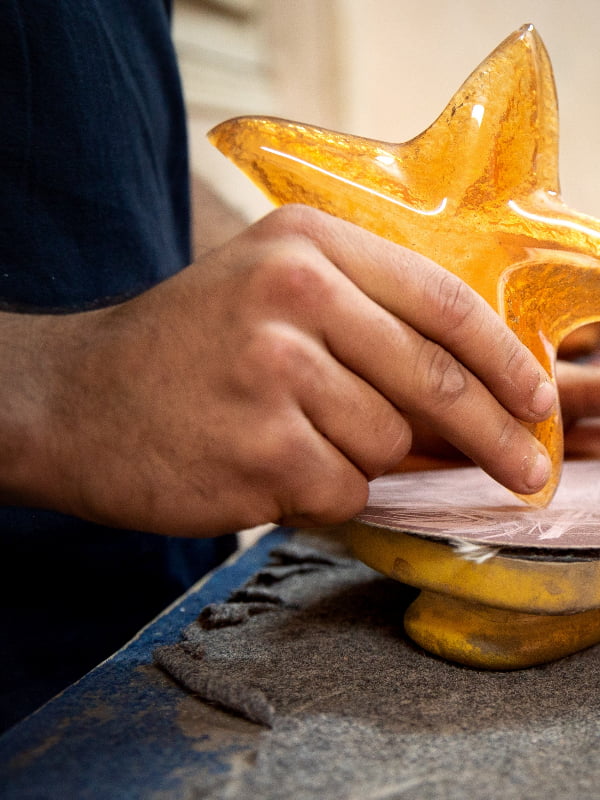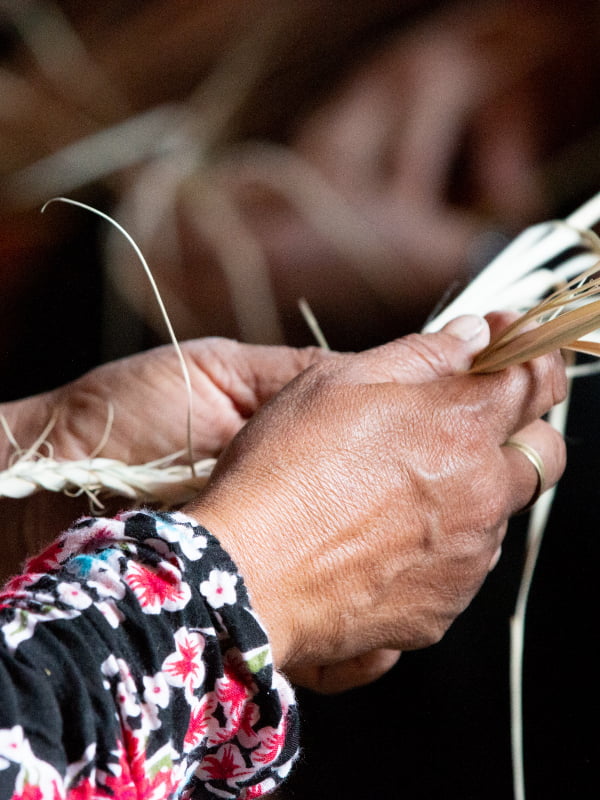What is Child Labour?
According to the International Labour Organization, child labour is "work that deprives children of their childhood, their potential and their dignity, and that is harmful to physical and mental development".
Child labour refers to work that:
- is mentally, physically, socially or morally dangerous and harmful to children, and/or
- interferes with their schooling by depriving them of the opportunity to attend school, obliging them to leave school prematurely, or requiring them to attempt to combine school attendance with excessively long and heavy work.
Whether or not particular forms of work can be called child labour depends on the child's age, the type and hours of work performed, the conditions under which it is performed and the objectives pursued by individual countries. The answer varies from country to country, as well as among sectors within countries.
At what age is child labour considered child labour?
The Child and Adolescent Labour (Prohibition and Regulation) Act of 1986, amended in 2016, states that "any person below the age of 14 years is defined as a child, and child labour is a way of exploiting these children."
According to UNICEF, the activities "given to children between 5 to 11 years of age are considered child labour if they work at least 28 hours a week. […] For children between 12 to 14 years of age, 14 hours of economic activity or 42 [hours of] domestic activity along with economic activity per week is considered child labour."

What are the causes of child labour?
Different circumstances may force parents to send their children to factories or fields rather than school. Families that face financial uncertainties or challenges may feel they have no other choice. Poverty, illnesses, and job losses are the most common causes of child labour. Other causes include the lack of access to good education, decent work, and a limited understanding of child labour. In today's world, conflicts, mass migration, natural disasters and climate change have increased the number of children that carry out forced work.
What are the dangers of child labour?
In the worst-case scenario, child labour leads to forms of slavery. For example, selling and trafficking children and recruiting children for armed conflicts. Another danger for children is sexual exploitation, where they face physical and mental exploitation. Children also face the danger of economic exploitation, which involves illegal activities such as producing and smuggling drugs.
What are the effects of child labour?
The consequences of forced child labour are saddening and go much further than missing out on an education and reducing future career options. When young children are forced to work, they miss the opportunity to develop from a child into a teen and an adult. Young children should not feel the pressure or responsibility to contribute to the family income. They run the risk of physical and mental harm. They even risk losing their lives.
What are the effects of child labour on society?
- One essential resource of a country is its HRD: Human Resources Development. A strong HRD is what a country needs to develop. Child labour harms HRD; only education, training, and so on can improve a country's HRD.
- Many child labourers give a country and its government a bad reputation.
- Children forced to work are more likely to develop bad habits such as smoking, drinking, gambling and smuggling. Sooner or later, this may lead to addiction, affecting families and societies.
- Children forced to work are more likely to escape their situation by running away from home. They migrate into cities, where they lack a fixed place to live. Their circumstances choose to commit criminal acts more attractive.
Is child labour illegal?
Yes, child labour is illegal, but work by children is legal. Child labour occurs when children work but do not do dangerous work or work too many hours. National legislation defines child labour for different age groups. This varies from country to country. Child labour also does not exist if children work part-time outside school hours. The age at which they can work part-time while still going to school full-time also varies from country to country. Children are not allowed to work full-time as long as they are subject to compulsory education. Only then can they receive the minimum wage set by the government. The age at which children are no longer subject to compulsory education differs from country to country.
Who does child labour affect?
Children on the move, such as refugee and migrant children, are extremely vulnerable. Between January and June 2020, 6,200 children arrived in Bulgaria, Cyprus, Greece, Italy, Malta, and Spain. About 2,300 (37%) came unaccompanied, separated from their siblings and parents. With their already troubled backgrounds from conflicts, disasters and perhaps poverty, they risk being forced into work or worse. When migrating alone via abandoned trails, they risk being trafficked. Trafficked children face human rights violations such as abuse and violence. Girls face the danger of being sexually exploited; boys are very likely to be forced to join armed rebel groups. They may be forced to break laws without knowing it.
Also, children growing up in low-income families in a region with little or no economic opportunities and a lack of proper infrastructure and social facilities, such as schools.
How does child labour get in the way of their future?
Doing light housework or work during school holidays helps children develop. Helping on their parents' farm prepares them for a future in farming. But child labour limits their education and gets in the way of their mental, physical and social development. Girls face the most significant risk of falling behind when they have to combine going to school, working and doing household chores. This makes them vulnerable to exclusion from the labour market, the fastest way into poverty and exploitation.
Are children helping out carrying out child labour?
All over the world, also in the Netherlands, it is still common for children in farming families to help with work during the harvest season. With their help, there is no need to hire extra temporary labourers. But there is a fine line between helping out and working daily. Worldwide, almost 1 in 10 children do not go to school because they have to work. 4 in 10 do work dangerous for their health and development. In 2020, 160 million children carried out work that adults should have done. Children are allowed to work for a limited number of hours, provided that such help does not interfere with their education and development and the work is not dangerous in any way. It is not the same as carrying out child labour.
Where does child labour occur?
The International Labour Organization (ILO) has identified industries and countries where child labour is common:
- Bricks: Children work in brick factories in Argentina, Brazil, China, Ecuador, Peru and North Korea.
- Cocoa and coffee beans: Children have to pick the beans in plantations in Brazil, Colombia, Côte d'Ivoire, Dominican Republic, El Salvador, Guinea, Honduras, Kenya, Mexico, Nicaragua, Panama, Tanzania and Uganda.
- Cotton: Children have to help harvest the cotton in plantations in Côte d'Ivoire, Turkmenistan and Uzbekistan.
- Mining: Children sift unclean and polluted water to look for gold in mines in parts of Africa, Asia and South America.
- Sweatshops: Children help make cheap clothing. There are sweatshops worldwide.
- Sugar cane: Children worldwide work in sugar cane plantations to help harvest the canes. This is the most common in Cambodia, Guatemala and the Philippines.
- Tobacco: This is the most dangerous industry for children to work in because of the hazardous chemicals. This is the most common in Argentina, Guatemala, Indonesia, Italy, Kenya, Pakistan, Poland, Thailand, Türkiye, and Zimbabwe.
What is the number of child labourers in the world?
In low-income countries, a little over 1 in 5 children are involved in child labour. The percentage of children aged 5 - 17 working worldwide is as follows:

The percentage of children working aged 5 - 17 worldwide is as follows: Africa, south of the Sahara: 86.8 million Central and South Asia: 26.3 million East and Southeast Asia: 24.3 million North and West Africa: 10.1 million Latin America and Caribbean: 8.2 million Europe and North Africa 3.8 million.
How many children are involved in child labour worldwide?
According to UNICEF and the International Labour Organization (ILO), 160 million children are involved in child labour worldwide. This number has increased by 8.4 million since 2016. The number of very young children aged 5 - 11 now makes up half of the 160 million. As we speak, 80 million young children are working instead of going to school.
How did the Industrial Revolution affect child labour?
Child labour was common during the Industrial Revolution, also in the Netherlands. Owners of new and upcoming factories needed more and more workers. Due to financial needs, families left their farms to move to cities, close to the factories and work. The lack of childcare forced parents to bring their children to the workplace. The children turned out to be excellent workers. Eager to do chores and help out, they moved swiftly around the heavy textile weaving machines. Their tiny hands and bodies carried out tasks adults could not perform. Commercial bakeries, tobacco producers and peat excavation factories also benefitted from this cheap form of labour. Girls earned 25 cents per day; boys got 35 (1860). But child labour came at a price much higher than this. Because of their eagerness and agility, children were the ones that worked around the most dangerous machines. One moment of inattention could lead to severe accidents. In those days, children often lost a hand, a limb and even their lives.
Child labour in the Netherlands
How did child labour in the Netherlands fall out of favour?
During the Industrial Revolution, the Netherlands had a population of 3 million. More than 500,000 children between 6 and 11 were working in factories. To keep the price of manufactured goods low, the Dutch government even encouraged child labour. Slowly, this sentiment began to change. The public linked child labour to incidents and deaths. Child labour kept children from going to school, and, as a result, they missed out on a proper education. Also, adult labourers felt replaced by children that worked for less money. Dutch newspapers and books spoke openly about and against child labour.
How did child labour end in the Netherlands?
Politician Samuel van Houten was the first to act. He passed the Child Labour Act through the Dutch parliament in 1874. The Act forbids children younger than 12 from working in factories. As there was no agency to enforce the law and issue fines against violations, the law had little effect on the situation. The law also included many exceptions, like home or farm work. It took 8 years for the Dutch government to install a factory inspection system that enforced the Child Labour Act. At first, the penalties for breaking this law were mild. Child labour finally decreased when the penalties became more strict (1887). Now, children must attend school until they are 18 or have their secondary school diploma.
Is there child labour in the Netherlands?
Through the Industrial Revolution, child labour was common in the Netherlands. It ended with the Child Labour Act in 1887. Still, child labour on family farms continued to be the norm. Today, children in the Netherlands must attend school until they are 18. They can only start working full-time when they have their secondary or high school diploma.
Child labour law in the Netherlands
In 2019, the Dutch Senate adopted the 'Child Labour Due Diligence Law'. This law requires companies to check if child labour happens in their supply chains. If so, companies must write an action plan to end child labour. The government has yet to determine when this new law will take effect; they are preparing a General Administrative Order to identify the organisation that will enforce the Act. The idea behind the law is that companies must do what they can to investigate if their goods or services involve child labour. However, the government does not expect Dutch companies to guarantee that child labour does not happen.
The law applies to companies registered in the Netherlands and companies abroad selling their products or services to the Dutch market. Companies that fail to submit a statement on child labour can expect a symbolic fine of €4,100. But, complaints by a third party may lead to a raised fine. If a company fails to carry out due diligence, it may receive legally-binding instructions and a timeframe to carry them out. If the company fails to carry out the instructions within the timeframe, it can expect a fine. 2 fines within 5 years may lead to a prison sentence for the responsible director. In extreme cases, failing to follow the law can result in imprisonment and fines of up to €750,000 or 10% of the company's annual turnover.
For more information on child labour law in the Netherlands, see MVO Platform (in English).
How can we stop child labour?
Sustainable Development Goal (SDG) 8, decent work and economic growth, promotes inclusive and sustainable economic growth, employment and decent work for all. SDG 8.7 calls for an end to modern slavery, trafficking and child labour. The goal is to end child labour in the supply chain by 2025.
Ending child labour starts with recognising it exists. Business owners can no longer assume there is no child labour in their chains. When business owners notice signs of child labour, they should start a dialogue with their chain partners to look for ways to end child labour together.
We all need to ask questions. Asking questions and demanding change is the best step toward ending child labour. As consumers, we must stop buying goods from brands that use child labour. If in doubt, the product's price is often a good indicator. Clothes that are too cheap to be true most likely involve child labour.
Consult our FBK advisors
Do you wonder if child labour takes place in your production chain? And if you do, do you ask yourself how to approach this? Consult our advisors; they are happy to help you and offer advice. Send an email to our FBK advisors with your ideas.
Would you like to raise awareness? Share our user stories and information. For the latest news and user stories, subscribe to our monthly Newsletter. And follow us on social media:
Sustainable Development Goals

SDG8: Decent work and economic growth
Small Dutch company takes action against child labour
Fund Against Child Labour (FBK) supports Dutch companies in banning child labour from their supply chains. Arte Groep, a Dutch SME, produces stone kitchen tops. The stone comes from mines in India. There is a lot of poverty around these mines, which is one of the root causes of child labour. Along with the FBK subsidy and with help of the Arise NGO, Arte was able to create a Free Child Labour Zone, so that children can go to school.
- Ministry of Foreign Affairs




